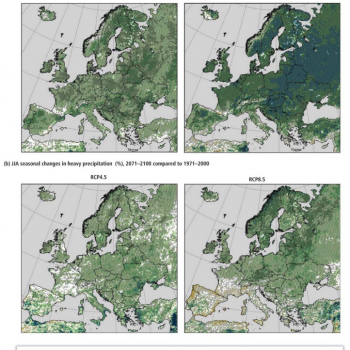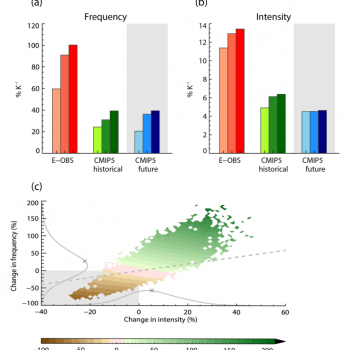Description and activities
Within the strategies for Horizon Europe, the European Union wish to develop a priority plan on “Accelerating the Transition to a Climate Prepared and Resilient Europe”. By 2030. The action plan considers the following aspects:
- Prepare Europe to deal with climate disruptions, and assist all citizens, communities and regions in better understanding, preparing for and managing climate risks such as heatwaves, forest fires, droughts, floods, storms and diseases.
- Accelerate the transition to the future, supporting 200 European communities and regions in co-creating a vision and innovation pathways, as well as developing solutions and enabling conditions for transformative adaptation within safe planetary boundaries.
- Build deep resilience by scaling up actionable solutions triggering societal transformations through 100 deep demonstrations of resilience across a number of European communities and regions.
The last years demonstrate the importance of this strategy in respect to flash floods by several disasters such as storm Alex 2020 in France/Italy or Bernd 2021 in the Eifel region (Germany/Belgium) with huge damages and several deaths.
HydroEurope aims to tackle this issues, considering six cases of study from six different countries. This pan-European domain represent a high diversity of Climate Change conditions that might trigger flash flood event at different scales.
Main topics of the project
Uncertainties in Advanced Hydrological and Hydraulic Modelling
“Uncertainty: a quantifiable attribute of the measurement that characterizes the dispersion of the values that could reasonably be attributed to the measurement”
Hydrological and hydraulic modelling is a key component of any forecast and warning system in water management.
A precise and reliable forecast helps prevent flood damage and properly plan interventions in the event of a flood event. The accuracy of a forecast depends on the main sources of uncertainty within the model. This is because uncertainties in hydrologic data cause simulation models giving bad forecast, which might lead to decision-making and policy errors.
It has been lately observed that confronting the uncertainties leads to better water management outcomes.
In hydrology and hydraulics. Uncertainty has to be assessed from a large number of sources, including, global model structure, internal climate variability, climate downscaling methods, hydrological models, etc.
For example, the critical uncertainty in the projection of extreme hydrological characteristics predictions is vital for water resource development to provide robust climate adaptation plans (Meresa et al., 2022).
As it is shown in the following image, uncertainty propagates through climate bias correction techniques and hydrological process modelling. The aggregated uncertainty initiates from climate models and extends into the hydrological extremes (Merasa et al., 2022).

The cascade of uncertainty (source: Merasa et al., 2022).
Flash flood and Climate Change
“Flash floods: extreme flood events that can develop at a very rapid rate with little or no warning and that occurs whitin six hour of a rainfall event”
Current researches suggest that the precipitation from extreme events occurring once by decade might increase on the order of 10 times more. These changes mean that awareness and knowledge is vital to society, for example, when it comes to constructing sufficient resilient infrastructure. This mean that traditional Intensity – Duration – Frequency (IDF) curves might need to be updated and adapted to the challenges that poses the changes in the future climate.
The 5th Assessment Report of the IPCC states that the Climate Change will produce changes in flood patterns in different parts of the planets, which is linked to increments of surface temperature. As a consequence, flood events, and particularly, flash floods, set human lives at risk, having significant social and economic impacts.
Current researches suggest that the precipitation from extreme events occuring once by decade might increase on the order of 10 times more. This changes means that awarnes and knowledge is vital to society, for example, when it comes to constructing sufficient resilient infraestructure. This mean that traditional Intensity – Duration – Frequency (IDF) curves might need to be updated and adapted to the challenges that poses the changes in the future climate.

Changes in frequency (a) and intensity (b) of extreme rainfall events in observations (E-OBS) and models (CMIP5) between periods 1951 – 1980 and 1984 – 2013 over Europe (source: Myhe et al., 2019).

(a) Changes in heavy precipitation from December to February (RCP4.5 – 8.5) and (b) changes in heavy precipitation from June to August (RCP4.5 – 8.5) (source: Holguin et al., 2021).
Acidental Water Pollution
“Accidental water pollution: pollution caused by accidental release of contaminants in water bodies that can be derived from industrial, agricultural or urban activities”
According to EEA report “Drivers of and pressures arising from selected key water management challenges — A European overview”, current key problems include pollution from urban and industrial waste water, diffuse pollution from agriculture, and pollution from mining and dwellings that are not connected to a sewage system.
Water pollution accidents can occur at many levels, mainly affecting water bodies (rivers, streams, lakes, open waters, etc.). They can occur in urban or rural areas. Urban areas, surrounded by industrialization, can be affected by accidental events polluting the rivers and streams that might be used as water resources for consumption (drinking water, agriculture, etc.). In rural areas, pollution caused by extractive agriculture, might also produce pollution directly to water bodies or groundwater.
Drinking water availability reminds one of the main issue of future environmental management. This means that these kinds of events need to be well documented and studied in order to minimize their direct impacts in society.


Water pollution of water bodies under different situations (source: www.nrcd.org & AtlasScientific).
